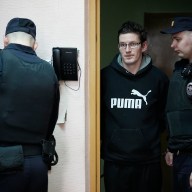Talk of a southwest ring road began in 1959 and despite $6 million spent on unsuccessful negotiations with Tsuu T’ina, a looming battle over the ecologically sensitive Weaselhead, opposition to Lakeview homes being expropriated and construction costs in the hundreds of millions, the momentum to get paving seems unrelenting.
In recent interviews, Mayor Dave Bronconnier has made it clear — he’s intent on moving forward with ring road Plan B.
Perhaps it’s time to think outside of the ring road box though. Perhaps this 50-year-old failure should be laid to rest in favour of more viable, cost-effective and expedient plans.
Research, including that of the Victoria Transport Policy Institute, indicates while building more roads only results in more traffic, improving public transit alleviates congestion.
The American Public Transportation Association has found that an urban rail system provides more capacity than a six-lane freeway and says increased public transit reduces the investment required for expansion of roadways. Further studies by the association have concluded for every dollar invested in transit, there will be up to $6 in returns.
Calgarians have the highest car ownership rates per capita in Canada though, making it all the more challenging to make transit investments appealing.
Ottawa has set up bus-only roads and many other cities have high-occupancy vehicle (HOV) lanes making riding the bus an attractive alternative. Calgary only has 25 blocks of Centre Street North designated as an HOV lane, so our buses chug along in tandem with traffic. Adding additional HOV lanes in the south and increasing service hours would get drivers into buses and carpools.
Improving cycling infrastructure is an economical way to further ease traffic pains.
Minneapolis, the city with the coldest average temperature in the United States, has designated 14 per cent of its transportation budget to cycling infrastructure. Calgary, meanwhile, does not separate a specific budget for cycling. Connected routing, bike lanes, bicycle-friendly bridges and bicycle-inclusive policies result in increased cycling. Two years after the installation of a bike lane in Toronto, there was a 23 per cent increase in cycling.
Traffic complaints are perennial, but we can’t pave our way out of them. The solutions are counterintuitive — creating practical alternatives to the single-occupant vehicle will save us from 50 more years of southwest ring road deliberations.
















